![]() No area of history is as popular in historical fiction and film as the Second World War. Oddly, it’s one I don’t read a lot about anymore, maybe because of overload when I was younger. I mean, I get it…Nazis = bad, battles in the South Pacific were brutal, and I’ve seen all the Holocaust movies I ever need to see to get the point…. yet occasionally you get a new story, one you didn’t already know. Such is the case with The Pear Tree, from fellow Chicago writer Karen (K M) Sandrick.
No area of history is as popular in historical fiction and film as the Second World War. Oddly, it’s one I don’t read a lot about anymore, maybe because of overload when I was younger. I mean, I get it…Nazis = bad, battles in the South Pacific were brutal, and I’ve seen all the Holocaust movies I ever need to see to get the point…. yet occasionally you get a new story, one you didn’t already know. Such is the case with The Pear Tree, from fellow Chicago writer Karen (K M) Sandrick.
Full disclosure, I read this book to review it for Windy City Reads (I’ll post the review when it’s up). While the topic was intriguing, I wasn’t impressed with the cover of the book, and went in with low expectations. I was wrong. It’s well-researched and moving. Plus the story is one I only vaguely heard of, With that…
Karen, what’s your story?
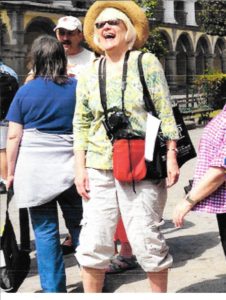 I am a long-time freelance journalist who specializes in clinical medicine, hospital finance and governance. The Pear Tree is my first attempt at fiction. You may wonder how it all came about; glad you asked. With a degree and background in science, I have had little education in some of the fun stuff, like literature, and drama, and music. Even history got short-shrift. The only class I had as an undergrad, for example, was The History of Western Civilization—in two semesters. So I have been filling in the blanks with continuing education courses at local universities.
I am a long-time freelance journalist who specializes in clinical medicine, hospital finance and governance. The Pear Tree is my first attempt at fiction. You may wonder how it all came about; glad you asked. With a degree and background in science, I have had little education in some of the fun stuff, like literature, and drama, and music. Even history got short-shrift. The only class I had as an undergrad, for example, was The History of Western Civilization—in two semesters. So I have been filling in the blanks with continuing education courses at local universities.
One class in a course on WW II on the Eastern Front began by recounting the story of the Anthropoid operation (depicted in the recent movie Anthropoid editorial note: least appealing movie title ever) and then described the Nazis’ retaliation against the Czech people. That same evening at a free-form writing seminar (I have a lot of blanks to fill), the story began taking shape in my notebook. I have to say that it just grabbed onto me and wouldn’t let me go until it was told.
What’s The Pear Tree about?
It is a tale about a largely forgotten incident in WW II–the total destruction of the![]()
![]()
![]() small Czech town of Lidice in retribution for the assassination of the head of Nazi-occupied Czechoslovakia by Czech partisans. The Pear Tree begins on the day Reinhard Heydrich was attacked by Czech partisans. It describes the investigation that leads the Gestapo to Lidice, the destruction of the town, the interrogation of its women and children, and the forced separation of mothers from their infants, sons from their mothers, friends from friends. The book follows the paths of characters who wrestle with fear that they will never see their families again, that their secrets will be revealed, that they will never learn the truth.
small Czech town of Lidice in retribution for the assassination of the head of Nazi-occupied Czechoslovakia by Czech partisans. The Pear Tree begins on the day Reinhard Heydrich was attacked by Czech partisans. It describes the investigation that leads the Gestapo to Lidice, the destruction of the town, the interrogation of its women and children, and the forced separation of mothers from their infants, sons from their mothers, friends from friends. The book follows the paths of characters who wrestle with fear that they will never see their families again, that their secrets will be revealed, that they will never learn the truth.
It’s a fascinating…and horrible… story. What is it that fascinated you about it?
The enormity of the Nazi response and, in the end, its failure. Though there is almost no link between the townspeople and the assassination, all its men are killed onsite. All its women are taken away, killed or sent to forced labor or prostitution. Children are divided by their racial characteristics and either sent to gas vans or adoption by German families. The buildings of the town are razed, their bricks and stones carted away. The farms are plowed under, unsuitable “Czech dirt” is replaced by rich German soil. The objective is to leave no indication that the town ever existed. Overlooked is a pear tree sapling whose top branches have been blown away but whose trunk remains. The book tells of the importance of the only living reminder of Lidice to two main characters: a young woman who mourns the loss of her son and a thirteen-year-old boy who confronts Gestapo in search of his mother.
Without giving away spoilers, what is your favorite scene?
After liberation of Eastern Europe by the Soviets, two characters from the town ![The Pear Tree by [Sandrick, Karen M]](https://images-na.ssl-images-amazon.com/images/I/61nkTIV9eFL.jpg) of Lidice meet in a displaced persons camp and begin a friendship. The woman is housed in the camp after being rescued from years in forced labor and learning that her son had been killed by Nazis. The teenage boy comes to the camp in search of his mother. The two begin a friendship: the woman tells the boy stories about what she remembers of his mother’s younger days; the boy brings the woman treats he smuggles from outside the camp.
of Lidice meet in a displaced persons camp and begin a friendship. The woman is housed in the camp after being rescued from years in forced labor and learning that her son had been killed by Nazis. The teenage boy comes to the camp in search of his mother. The two begin a friendship: the woman tells the boy stories about what she remembers of his mother’s younger days; the boy brings the woman treats he smuggles from outside the camp.
The day before he leaves for Prague to continue the search for his mother, he brings the women one last gift: a crochet hook so she can stitch together patterns from the coils of threads she collects from her own clothing and the garments she resizes for other people in the camp. It’s a small scene but it reflects the resilience of the human spirit, the theme I hope the book conveys.
where can people find the book?
The website is: www.thepeartreebook.com.
Subscribe to my monthly newsletter and get a chance to win a signed paperback copy of Acre’s Bastard. Each month you’ll receive links to interviews with great authors, news about upcoming events and previews of my work in progress, Acre’s Orphans. Look in the bottom left of the page for the sign-up sheet. No spam, just once a month updates and a chance to learn about great new Historical Fiction from around the world.


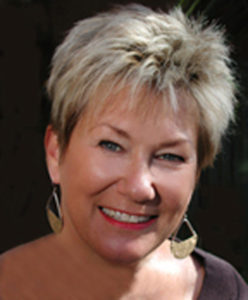
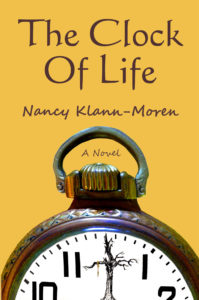
 I’m an American ex-pat living out her Grizzly Adams dream in the Austrian Alps. I don’t have a bear, but I do have a dog, a cat, a whole hell of a lot of fat chickadees and a very mild-mannered husband with whom I laugh every day. I grew up in Minneapolis, Minnesota, attended Rocky Mountain College in Billings, Montana and studied to become a veterinarian.
I’m an American ex-pat living out her Grizzly Adams dream in the Austrian Alps. I don’t have a bear, but I do have a dog, a cat, a whole hell of a lot of fat chickadees and a very mild-mannered husband with whom I laugh every day. I grew up in Minneapolis, Minnesota, attended Rocky Mountain College in Billings, Montana and studied to become a veterinarian.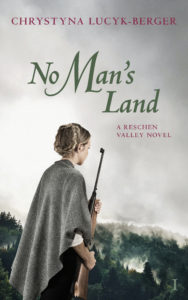 from 1920–1950. The Breach, which is part 2, releases March 15th and is on preorder now.
from 1920–1950. The Breach, which is part 2, releases March 15th and is on preorder now.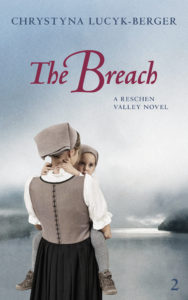 You will find me on Goodreads a lot (Chrystyna Lucyk-Berger). I’m doing a Kindle giveaway of
You will find me on Goodreads a lot (Chrystyna Lucyk-Berger). I’m doing a Kindle giveaway of  Milana Marsenich has an M.Ed. In Mental Health Counseling from Montana
Milana Marsenich has an M.Ed. In Mental Health Counseling from Montana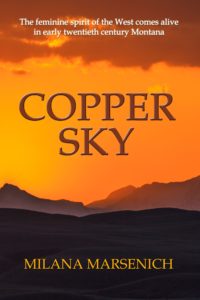
 What is it about that time period you found so fascinating?
What is it about that time period you found so fascinating?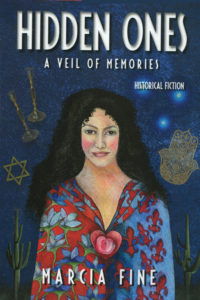
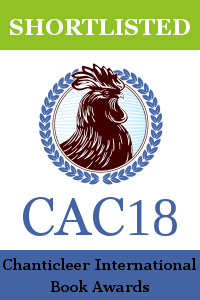
 I’m from Colombia, so English, technically, is not my first language. I work developing medical software and have been doing that for over thirteen years now. My academic background is in engineering, but with a minor in history. History has always fascinated me, and I hope that my books showcase that. But, you’ll notice that there is no literary background. Nor do any of my family members have literary backgrounds; they are all engineers. But, I was always a good storyteller. I could make up stories during long road trips and keep everybody entertained. Teachers often told me I had a future in writing. But it would be decades before I took the fateful plunge into publishing. Having an exciting tale to tell helped, too.
I’m from Colombia, so English, technically, is not my first language. I work developing medical software and have been doing that for over thirteen years now. My academic background is in engineering, but with a minor in history. History has always fascinated me, and I hope that my books showcase that. But, you’ll notice that there is no literary background. Nor do any of my family members have literary backgrounds; they are all engineers. But, I was always a good storyteller. I could make up stories during long road trips and keep everybody entertained. Teachers often told me I had a future in writing. But it would be decades before I took the fateful plunge into publishing. Having an exciting tale to tell helped, too.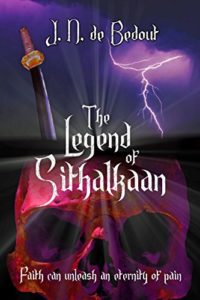 history, (approximately 1460-1600 for us Westerners, give or take) and as such, it is chaotic. Think of it as the equivalent of the Thirty Years War in Europe. When people imagine the samurai, they have an ideal of noble warriors following the Bushido. But in reality, the foundations of that discipline were often ignored during the Sengoku period; instead, it was refined and perfected into what is known today during the peaceful years of the later Tokugawa dynasty where warfare was near non-existent. Furthermore, if you read about Oda Nobunaga’s early struggles, you’ll find that much of his early conflicts were with rebellious Warrior Monk sects rather than other samurai clans. It’s also quite interesting that Oda Nobunaga, probably one of the most renowned samurai ever, was a pioneer in gun tactics.
history, (approximately 1460-1600 for us Westerners, give or take) and as such, it is chaotic. Think of it as the equivalent of the Thirty Years War in Europe. When people imagine the samurai, they have an ideal of noble warriors following the Bushido. But in reality, the foundations of that discipline were often ignored during the Sengoku period; instead, it was refined and perfected into what is known today during the peaceful years of the later Tokugawa dynasty where warfare was near non-existent. Furthermore, if you read about Oda Nobunaga’s early struggles, you’ll find that much of his early conflicts were with rebellious Warrior Monk sects rather than other samurai clans. It’s also quite interesting that Oda Nobunaga, probably one of the most renowned samurai ever, was a pioneer in gun tactics.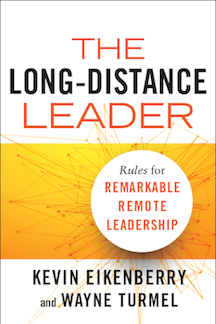 “paying the rent” thing. It’s available for Pre-Order now. Just saying.
“paying the rent” thing. It’s available for Pre-Order now. Just saying.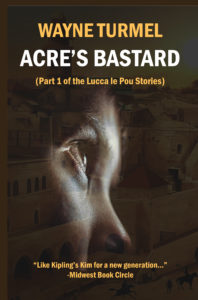

 I live on our lavender farm in Sonoma, California, which Jack London named Valley of the Moon, and wrote his books. My first book was Lavender Fields of America, a non-fiction coffee table book. Recently, our farm was destroyed in the Sonoma/Santa Rosa fires, but we are rebuilding and replanting as we speak! I am fascinated with remarkable people who lived before us and their improbably, fantastical stories. That’s why I write biographic historical fiction.
I live on our lavender farm in Sonoma, California, which Jack London named Valley of the Moon, and wrote his books. My first book was Lavender Fields of America, a non-fiction coffee table book. Recently, our farm was destroyed in the Sonoma/Santa Rosa fires, but we are rebuilding and replanting as we speak! I am fascinated with remarkable people who lived before us and their improbably, fantastical stories. That’s why I write biographic historical fiction.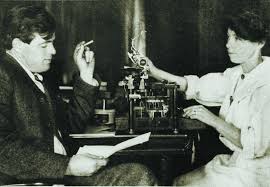
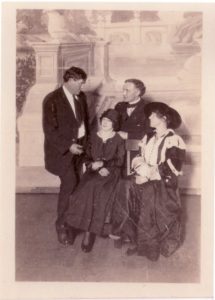
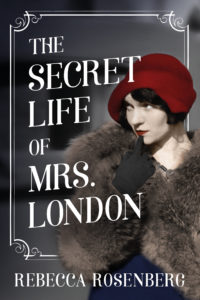
 On a typical day, one could find Karen in the throngs of adolescent wonderment, trying to create harmonious music-making to these next-generation superstars. From the first squeaks of “Hot Cross Buns” to the lavish lyrical sounds of “Danny Boy,” there is much magic that occurs within the four walls of the band room.
On a typical day, one could find Karen in the throngs of adolescent wonderment, trying to create harmonious music-making to these next-generation superstars. From the first squeaks of “Hot Cross Buns” to the lavish lyrical sounds of “Danny Boy,” there is much magic that occurs within the four walls of the band room.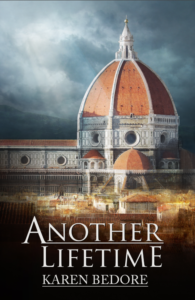 remember. The humanism movement—especially in Italy—has transformed the visual and musical art world, and I wouldn’t be where I am today without that ingenuity. I have family roots in Italy as well, and am in love with the language and culture. If I were a character, I would be Aria. Many people who have read the book have noticed that I pretty much inserted myself into the book.
remember. The humanism movement—especially in Italy—has transformed the visual and musical art world, and I wouldn’t be where I am today without that ingenuity. I have family roots in Italy as well, and am in love with the language and culture. If I were a character, I would be Aria. Many people who have read the book have noticed that I pretty much inserted myself into the book.